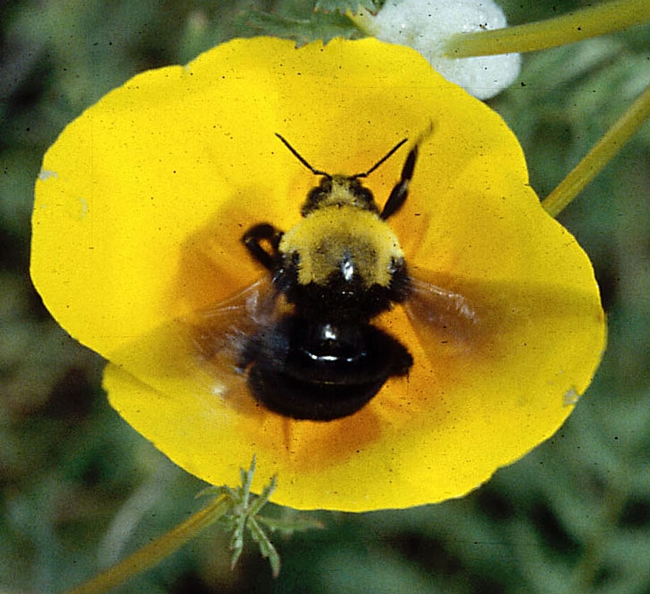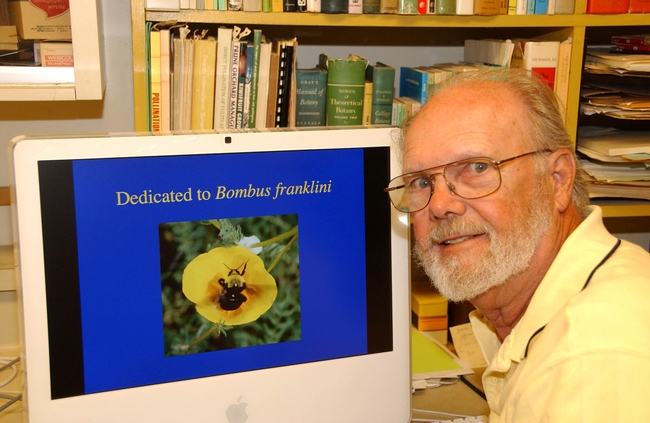Native pollinator specialist Robbin Thorp, emeritus professor of entomology at the University of California, Davis, is on a mission.
He and fellow members of the Xerces Society for Invertebrate Conservation are trying to save Franklin's bumble bee from extinction.
So the news that came out today about this critically imperiled bumble bee was both good and bad.
It's good that the U.S. Fish and Wildlife Service (USFWS) today announced that the petition submitted by Thorp and the Xerces Society in June 2010 to list Franklin’s bumble bee under the National Endangered Species Act has moved to the next step in the process, the 12-month review period. This may lead to an “endangered species” listing and provide protective status.
That's good. But it's bad in that Franklin's bumble bee hasn't been seen since 2006.
It's possible that it may already be extinct but Thorp holds out hope. He's been monitoring the declining population since 1998.
Franklin’s bumble bee, Bombus franklini (Frison), occupies only a narrow range of southern Oregon and northern California. Its range, a 13,300-square-mile area confined to Siskiyou and Trinity counties in California; and Jackson, Douglas and Josephine counties in Oregon, is thought to be the smallest of any other bumble bee in North America and the world.
Thorp, who maintains an office at the Harry H. Laidlaw Jr. Honey Bee Research Facility at UC Davis, sighted 94 of the species in 1998, but only 20 in 1999. The numbers soon began declining drastically (except for 2002):
2000: Nine sightings
2001: One
2002: 20
2003: Three
2004: None
2005: None
2006: One
2007 through 2011: None.
This year Thorp surveyed the bumble bee's historical sites on five separate trips encompassing several days each: two in June and one each in July, August and September.
Zip. Zilch. Nada.
Franklin's bumble bee, mostly black, has distinctive yellow markings on the front of its thorax and top of its head. It has a solid black abdomen "with just a touch of white at the tip, and an inverted U-shaped design between its wing bases," Thorp said.
Take a close look at his photo of Franklin's bumble bee on a California poppy, the state flower. Let's hope it's not one of the last photos of this unique bumble bee.
Robbin Thorp thinks he'll find it again.
“My experience with the Western bumble bee (B. occidentalis) indicates that populations can remain ‘under the radar’ for long periods of time when their numbers are low,” he said.
Read more about this bumble bee and Thorp's mission on the UC Davis Department of Entomology website.
If you want to see pinned specimens, visit the Bohart Museum of Entomology, 1124 Academic Surge on California Drive, UC Davis campus.
Attached Images:

Franklin's bumble bee on a California poppy. (Photo by Robbin Thorp)

Native pollinator specialist Robbin Thorp of UC Davis with his image of Franklin's bumble bee. (Photo by Kathy Keatley Garvey)